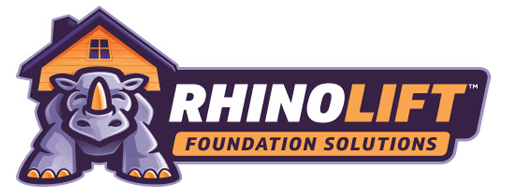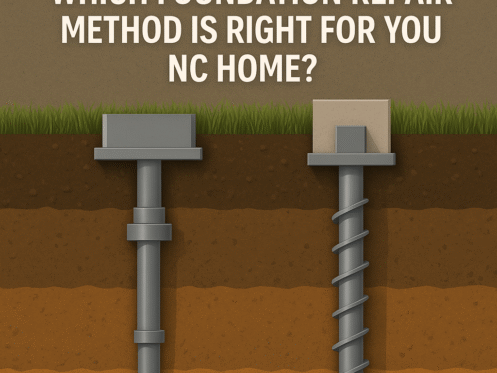Know the Difference – and Make the Right Choice for Your Home
Foundation problems are more than just cracks or settling floors—especially in North Carolina where clay-heavy soil and changing weather patterns can wreak havoc on your home’s stability. If you’re exploring permanent solutions, two proven methods stand out: push piers and helical piers.
Here’s how they compare, and how to know which is the best fit for your foundation.
1. What Are Push Piers?
Push piers (also called resistance piers) are steel tubes driven deep into the soil until they reach stable ground, like bedrock. They rely on the weight of the structure to help press them into place. Once anchored, they’re used to lift and stabilize a sinking foundation.
✅ Tip: Push piers are ideal for heavier structures where deeper, load-bearing soil layers must be reached.
2. What Are Helical Piers?
Helical piers are shaped like giant steel screws and are twisted into the ground using hydraulic torque. Unlike push piers, they don’t rely on the weight of the home for installation, making them suitable for both light and heavy structures.
✅ Tip: Helical piers work well in varied soil conditions and can be installed with minimal disruption to the surrounding area.
3. Push Piers vs. Helical Piers: Side-by-Side Comparison
| Feature | Push Piers | Helical Piers |
|---|---|---|
| Installation Method | Pushed into soil using home’s weight | Screwed into soil using hydraulic torque |
| Soil Suitability | Best for deep or unknown soil conditions | Works well in softer, looser, or shallow soils |
| Structure Type | Heavier homes and commercial buildings | Light or heavy structures, including decks |
| Excavation Needs | Requires more excavation and access space | Less invasive, faster installation |
| Cost & Time | Often more cost-effective, may take longer | Higher per-foot cost, quicker setup |
| Load Capacity | Excellent with solid soil or bedrock contact | Strong and flexible with wide load distribution |
4. Which Should You Choose?
Go with Push Piers if your home is heavy, built on questionable soil, or if bedrock is located deep underground.
Choose Helical Piers if your structure is lighter or built on mixed or looser soils and you want a fast, minimally invasive solution.
✅ Tip: Both methods are permanent and effective—what matters most is soil condition, structure type, and long-term goals.
Protect Your Home’s Foundation the Right Way
At RhinoLift Foundation Solutions, we don’t believe in one-size-fits-all answers. Our local experts will inspect your home, evaluate the soil conditions, and recommend the best piering method for lasting stability.
📞 Call RhinoLift today for a free foundation evaluation and personalized repair plan!

